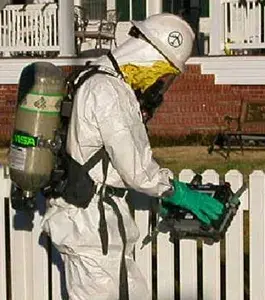 (January/February 2008) If you’re a first responder, the size of your equipment matters.
(January/February 2008) If you’re a first responder, the size of your equipment matters.
Case in point: Chemical detection. When firemen or EMTs arrive at the scene of a reported chemical release, some questions need immediate answers: “What class of chemical—if any—are we facing?” “What are the odds that we and others around us will be exposed?” “What type of personal protective gear should we use?”
Without a chemical detector handy, first responders are often going by best estimates and the accounts of eyewitnesses. It’s just not practical, or timely, to bring in large and cumbersome detectors to get a reading on the situation.
But what if first responders had in their toolkits a handheld system for detecting and analyzing chemicals? It would be easy to carry, battery operated, and spot-on accurate. It would also be affordable, requiring little maintenance and simple training.
This is the goal of the Lightweight Autonomous Chemical Identification System (LACIS). Under development with funding by the DHS S&T Directorate, LACIS could very well revolutionize hazmat and emergency response.
“We’re aiming for a device that could be used by all first responders,” says Angela Ervin, the program manager for the project. “They’ll be able to identify the chemical hazard and measure its concentration, in real time, when they arrive at the scene.”
Three performers are working to deliver a LACIS prototype: Sensor Research and Development Corporation, Smiths Detection–Edgewood, and a Purdue University/Griffin Analytical team. The detectors will weigh less than five pounds, use conventional batteries, and cost about $2,000 or less per unit. They’ll be designed to avoid false alarms, and they’ll enable first responders to identify a large number of vapor hazards, including the most dangerous toxic industrial chemicals and chemical warfare agents.
LACIS will help first responders to determine—with confidence—what kinds of equipment to don, what levels of hazmat and medical support are needed, and how long they should wait before cleanup can safely begin. If the situation is considered severe or questions about chemical contamination persist, state or Federal reinforcements could then be called in. The U.S. Environmental Protection Agency operates, for instance, a DHS-funded fleet of mobile chemical laboratories; "Science on Wheels" Snapshots article.
The next phase for the LACIS project is more rigorous and independent field testing of the prototypes, which is slated to begin this summer at Battelle Memorial Institute. “Our goal over the next two years is to evaluate the detectors in real-world environments,” says Ervin, who hopes to have a product on the market within three to four years.
To request more information about this story, please e-mail st.snapshots@hq.dhs.gov.
